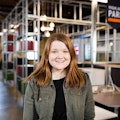What Makes the Subaru Collision Certified Program Unique
March 8, 2018—In March, Wadsworth International and TROIKA360 partnered to work with Subaru for the automaker’s certified collision repair program. Unlike other programs on the market, Wadsworth International will build and deploy the Subaru certified collision program.
The certified collision program focuses 100 percent on inspections and does not sell another service, says Livia Guarnieri, owner of TROIKA360. An OEM can be guaranteed the team is only representing the OEM.
Other benefits of this type of program include a closer relationship between between the shop and the manufacturer, and resources for Subaru collision centers.
Traditionally, collision certified programs have been outsourced to third-party companies because the OEM does not have the resources and the head-count necessary for the magnitude of work involved in a certification program, she says.
In this case, Guarnieri says, no one will know a third-party company was involved in the program because they aren’t selling Wadsworth International services to a repair facility.
Programs on the market are offered by third-party companies and the companies do not train on industry standards, she says.There aren’t any solutions in the industry who aren’t supporting another corporate initiative, she says.
Instead, programs will offer a certification based on the brand’s standards and OEM corporate initiative with the intent to create a specific experience for the owner of a vehicle.
Rick Miller, president of Wadsworth International and full-time consultant, has worked with shops for 16 years, including Jaguar Land Rover.
“There’s nothing wrong with other programs out there,” Guarnieri says. “It’s about offering a solution to customers if they don’t like what’s on the market.”
And improvements are needed in the future, she says.
Guarnieri says the next step needed for these programs is removing the municipality in towing. For example, if a car is an accident and needs to be towed somewhere, without companies like ON-Star, it is difficult to control where the vehicle gets towed. She says, the local authorities have no vested interest in a certified collision center and just cycle through a list and the towing company called that day can be affiliated with any body shop they would like, which can result in a customer missing out on getting towed to a certified facility and a certified repair.
When onboard telematics and first notice of loss can connect an owner to a certified shop locator, she says there will be shift in the industry. That shift will have lasting effects through the entire owner experience, because an OEM will then have the ability to support their certified collision centers in a much greater capacity.

